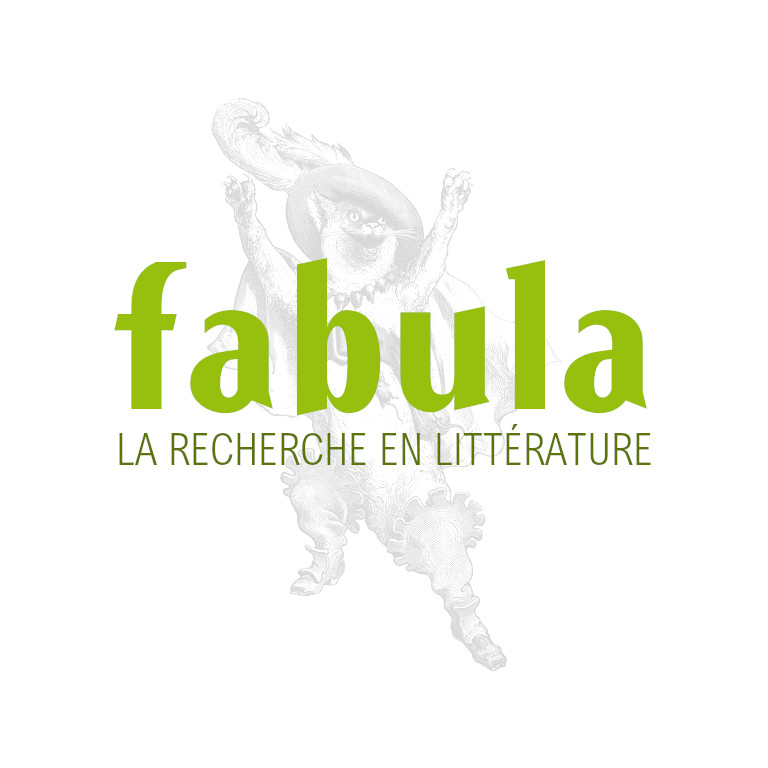
Nouvelle revue, premier numéro attendu pour juin 2009:
Storyworlds: A Journal of Narrative Studies - ISSN 1946-2204
Published by the University of Nebraska Press; first issue forthcoming in June 2009.
Editor:
David Herman, Ohio State University
Editorial Board:
H. Porter Abbott, University of California, Santa Barbara
Jens Brockmeier, Free University of Berlin and the University of Manitoba
Jonathan Culler, Cornell University
Gregory Currie, University of Nottingham
Catherine Emmott, University of Glasgow
Peter Galison, Harvard University
Richard J. Gerrig, Stony Brook University
Andreea Deciu Ritivoi, Carnegie Mellon University
Marie-Laure Ryan, University of Colorado, Boulder
Deborah Schiffrin, Georgetown University
Roy Sommer, University of Wuppertal
Wendy Steiner, University of Pennsylvania
Storyworlds: A Journal of Narrative Studies publishes state-of-the-art research in the field of interdisciplinary narrative theory. Unlike existing journals that target particular disciplines in which only certain kinds of narratives are the primary object of study, Storyworlds features research on storytelling practices across a variety of media; it also showcases cutting-edge methods of analysis and interpretation brought to bear on narratives of all sorts. Relevant storytelling scenarios include face-to-face interaction, literary writing, film and television, virtual environments, historiography, opera, journalism, graphic novels, plays, and photography. At the same time, contributors to the journal can approach narrative from perspectives developed in multiple fields of inquiry, ranging from discourse analysis, literary theory, jurisprudence, and philosophy, to cognitive and social psychology, artificial intelligence, medicine, and the study of organizations. In short, Storyworlds aspires to be the place for publishing interdisciplinary research on narrative across media.
Because Storyworlds is designed to be of interest to readers in many fields, essays should be as accessibly written as possible--even as contributors are encouraged to engage in the best practices of narrative research in their areas of specialization, and to present cutting-edge scholarship on a given aspect of stories or storytelling. To this end, all technical terms should be carefully defined and discipline-specific assumptions, concepts, and methods should be thoroughly explained.
Pertinent questions include (but are not limited to) the following: How do modes of storytelling--narrative ways of worldmaking--differ from other representational practices used to construct or reconstruct worlds, in a broad sense? Put differently, what distinguishes narrative from other methods for using symbol systems to structure, comprehend, and communicate aspects of experience? What constraints and affordances do particular storytelling media bring to the process of building narrative worlds? What tools are needed to characterize, in all its richness and complexity, the experience of inhabiting a narrative world in a given medium or across different media? What are the conditions for and consequences of engaging with such worlds, and how does this engagement vary across different narrative practices, cultural settings, and interpretive communities? The purpose of Storyworlds is to provide a forum for sustained scholarly inquiry into these and related issues, whose investigation will require collaborative, interdisciplinary work by researchers from across the arts and sciences.
Submissions must be original work. Manuscripts should be betweeen 6,000 and 8,000 words in length, including notes and bibliography. The journal uses a house style based on the most recent edition of the MLA Style Manual, with dates always mentioned in the parenthetical citation (unless they are noted in the text itself). In the Works Cited section dates should be listed at the beginning of each citation, as in an author-date system.
Article Citation:
Currie, Gregory (2007). "Both Sides of the Story: Explaining Events in a Narrative." Philosophical Studies 13.5: 49-63.
Book Citation:
Dennett, Daniel (1998). Brainchildren: Essays on Designing Minds. Cambridge, MA: The MIT Press.
Chapter in Edited Volume:
Schechtman, Marya (2007). "Stories, Lives, and Basic Survival: A Refinement and Defense of the Narrative View." Narrative and Understanding Persons. Ed. Daniel D. Hutto. Cambridge: Cambridge University Press. 155-78.
Sample Parenthetical Citations:
According to Gergen and Gergen (2001), "the development of such rudimentary narrative forms is favored by functional needs within the society" (175).
"Narrative and fiction are quite different things even if they often appear together in public" (Branigan 1992: 192).
Electronic submissions (saved as RTF files) are encouraged, but hard copies will be accepted. Please send your submissions to the editor at the following address:
David Herman
Department of English
Ohio State University
164 W. 17th Avenue
Columbus, OH 43210-1370
USA
Storyworlds is published annually at $52 for institutions and $31 for individuals by the University of Nebraska Press. For subscriptions outside the United States, please add $15 for shipping and handling. Canadian subscribers, please add appropriate GST or HST. Residents of Nebraska, please add the appropriate Nebraska sales tax. Make checks payable to the University of Nebraska Press and mail to: The University of Nebraska Press, PO Box 84555, Lincoln, NE 68501-4555, www.nebraskapress.unl.edu
All inquiries concerning subscription, change of address, advertising, and other business communications should be sent to the University of Nebraska Press at 1111 Lincoln Mall, Lincoln, NE 68588-0630.